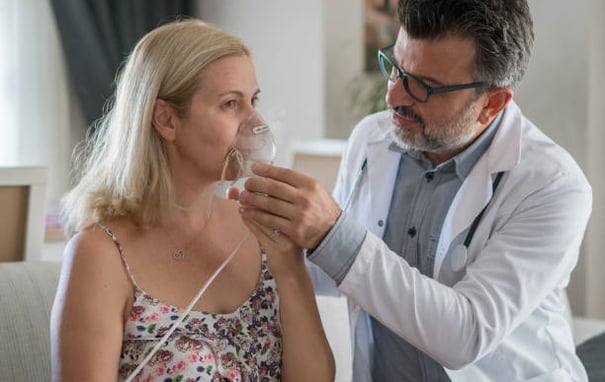What is COPD?
7/1/20252 min read


Chronic Obstructive Pulmonary Disease (COPD) is a progressive lung condition that makes it hard to breathe. It primarily affects older adults and is most commonly caused by long-term exposure to harmful substances like cigarette smoke, air pollution, or occupational dust and chemicals. COPD is not a single disease but a group of conditions, most notably chronic bronchitis and emphysema. In chronic bronchitis, the airways become inflamed and produce excessive mucus, leading to a persistent cough. Emphysema, on the other hand, involves the destruction of the tiny air sacs in the lungs called alveoli, which are essential for oxygen exchange. As these sacs are damaged, the lungs lose their elasticity and it becomes harder to exhale air, trapping it inside the lungs.
The main causes of COPD include smoking (the most significant risk factor), prolonged exposure to secondhand smoke, air pollutants, and genetic factors such as alpha-1 antitrypsin deficiency, a rare condition that can predispose individuals to develop COPD at a younger age. Occupational exposures, such as dust and chemical fumes in certain work environments, can also contribute. While COPD is largely preventable, many people are diagnosed only after the disease has advanced due to the gradual nature of its symptoms. Understanding these causes is crucial for prevention and early intervention, especially in high-risk populations.
Symptoms of COPD typically develop slowly and worsen over time. Early signs may include a chronic cough, especially with mucus, shortness of breath, particularly during physical activities, wheezing, and frequent respiratory infections. As the disease progresses, individuals may experience fatigue, unintended weight loss, and a feeling of tightness in the chest. Severe cases can result in cyanosis, or a bluish color of the lips or fingernails, due to low oxygen levels in the blood. Because these symptoms are often mistaken for normal aging or mild respiratory infections, many people delay seeking medical help until significant lung damage has occurred.
Management of COPD involves a combination of lifestyle changes, medications, therapies, and in some cases, surgery. The most important step in managing COPD is quitting smoking, which can slow the progression of the disease. Medications such as bronchodilators help open airways, while inhaled corticosteroids reduce inflammation. Pulmonary rehabilitation programs, which include exercise training, nutrition advice, and breathing techniques, can improve quality of life. In advanced cases, oxygen therapy may be needed, and a small number of patients may be candidates for surgical interventions such as lung volume reduction surgery or even lung transplantation. While there is no cure for COPD, early diagnosis and comprehensive management can significantly enhance a patient’s ability to live an active, fulfilling life.